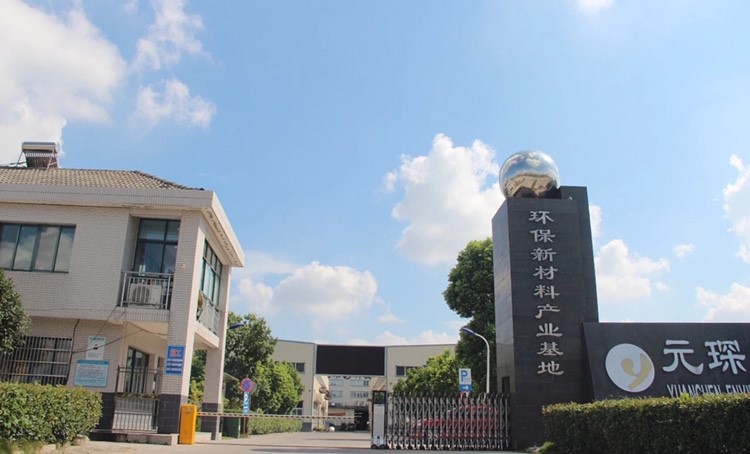
Denitrification catalyst is the core component of SCR technology. During the operation of the denitrification system, the catalyst will be deactivated due to various physical and chemical factors. At this time, it needs to be replaced, so how to deal with the failed catalyst after replacement? Can it be directly thrown away?
In August 2014, the State Ministry of Environmental Protection officially issued the Notice on Strengthening the Supervision of Waste Flue Gas Denitrification Catalysts and the Guidelines for the Review of Hazardous Waste Business License for Waste Flue Gas Denitrification Catalysts, which include waste flue gas denitrification catalysts (vanadium and titanium system) into hazardous waste management, with industrial source as "non-specific industry" and waste name as The industrial source is "non-specific industry" and the waste name is "waste flue gas denitrification catalyst (vanadium and titanium) from industrial flue gas selective catalytic denitrification process".

Therefore, the treatment of deactivated catalysts must be regenerated and treated or recycled according to the cause of their deactivation by an enterprise holding a Hazardous Waste Operation License. Yuanchen Technology successfully obtained the Hazardous Waste Operation License issued by the Department of Ecology and Environment of Anhui Province on December 21, 2015, and is a comprehensive environmental protection enterprise that integrates the research and development, production, sales and catalyst regeneration treatment or recycling of denitrification catalysts.
Regeneration treatment of deactivated catalysts
This is a way to restore some of the activity of a deactivated catalyst through a series of physical (removal of precipitated dust) or chemical (regeneration of the deactivated catalyst) procedures so that it can achieve the desired performance again.
The actual process usually requires sampling and analysis of the cause of the deactivation of the failed catalyst before developing specific regeneration procedures. Therefore, these tasks need to be carried out by skilled technicians in order to restore a certain level of activity without damaging the mechanical properties of the catalyst. The effectiveness of regeneration depends on the cause of catalyst deactivation, with physical causes such as blockage being more effective, and chemical causes depending on whether the catalyst deterioration is irreversible and the extent to which activity can be restored. The cost of catalyst regeneration depends on the complexity of the regeneration process, which can sometimes be higher than replacing a new catalyst of the same volume, and therefore requires a combination of economic and long-term operational considerations when using this method for effective catalysts.
Recovery of failed catalysts
The common recovery methods for failed catalysts can be divided into indirect recovery methods and direct recovery methods. The direct recovery method can be divided into separation method and non-separation method, while the indirect recovery method can be divided into dry method, wet method and combined wet and dry method. Due to the constraints of various factors and the impact of recovery benefits, the recovery methods of failed catalysts are generally indirect. Indirect recovery methods are mainly divided into.
(1) Dry recovery process
Dry recovery is to use solid alkali mixed with spent catalysts, which are scorched and melted in air to transform the V2O5 into water-soluble vanadate. The solution is boiled and the vanadate is hydrolyzed to precipitate V2O5. At the same time, due to the waste catalyst SiO2, Al2O3 and other impurity elements roasting, vanadium into water-insoluble vanadium silicate, vanadium oxide from the water leaching rate is reduced, the detailed process requires further study.
(2) Wet recovery process
After the catalyst is used, the vanadium in it exists mainly in the form of V2O5 and VOSO4, with the latter sometimes accounting for up to 40%-60%. The low-valent vanadium salts in the catalyst are easily soluble in acid and difficult to dissolve in alkali, while V2O5 is easily soluble in alkali and difficult to dissolve in acid, and thus can be leached in acid or alkali, and some studies have mostly used acid leaching. The process of wet recovery of catalyst components for the general can be divided into: precipitation, extraction and ion exchange methods and other physical-chemical methods. Precipitation method is mainly in some media vanadic acid, tungstic acid and molybdenum acid solubility differences, can be achieved by increasing the temperature to achieve the separation of vanadium tungsten molybdenum; extraction method is mainly through the extractant to achieve the separation of vanadium tungsten molybdenum soluble salt solution; ion exchange method is through the tungstic molybdenum acid root in the ion exchange resin adsorption differences, so that the separation of tungsten molybdenum.
Waste denitrification catalyst regeneration and recycling technology is innovative and has great market application prospects, and this technology has become a hot research topic for catalyst production plants.

Anhui Yuanchen Environmental Technology Co., Ltd (hereinafter referred to as "Yuanchen Technology") is a high-tech enterprise integrating R&D, production and sales of dust removal bags and denitrification catalysts. Over the past sixteen years, Yuanchen Technology has been focusing on the environmental protection field, and now has 4 international PCT, 33 authorized invention patents and 77 invention patents in process, among which many products such as "dust removal and denitrification integrated technology products" have been awarded the Scientific Progress Award of Anhui Province. Our dust removal bags (mainly PPS, PTFE, P84 and composite series filter materials) and SCR denitrification catalysts have been widely used in cement, steel, glass kilns, waste incineration power generation, biomass power generation, non-ferrous metal smelting and other industries. In the future, Yuanchen Technology will be guided by "becoming the guardian of global ecological environment", always rooted in environmental protection, and insist on the great cause of guarding the blue sky and white clouds. Leveraging on the national ecological civilization construction pattern, we will continue to deepen technology, optimize management, strengthen brand, refine industry and solidify advantages, and create synergistic value for industry through comprehensive and integrated governance and services.
This article was first published on http://www.shychb.com/, if you need to reproduce, please indicate the source.